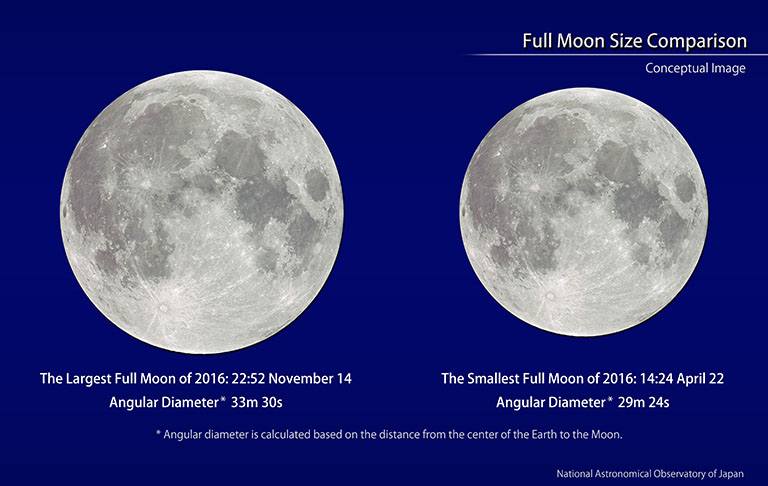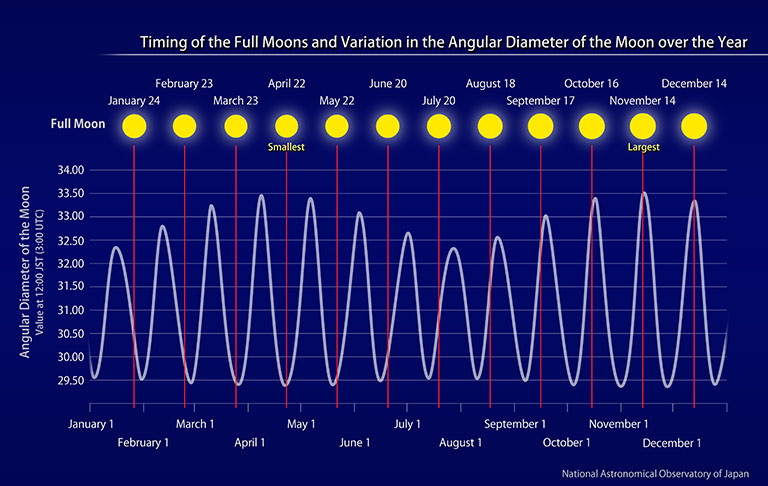Astronomical Events Information | 2016 | November
This Year’s Largest Full Moon
Let’s Observe the Condition of the Moon!

In 2016 one full moon occurs each month. The full moon of November 14 appears the largest of all of this year’s full moons. We can’t actually compare them in the sky, but if we were to place this full moon next to the smallest full moon of the year (April 22), the difference would be easy to discern.

The Moon orbits around the Earth, but because its orbit is elliptical, the distance between the Earth and the Moon changes gradually with time. For this reason the apparent size (angular diameter) of the Moon also changes, increasing when the separation is small and decreasing when the separation is large. The orbit of the Moon is also changing due to the effects of the gravity from the Earth, Sun, etc., so that the distances when the Moon is positioned closest to the Earth (perigee) and when it is positioned farthest from the Earth (apogee) are different each time. On November 14, the Moon passes perigee at 20:21 (approximately 356,000 kilometers from the center of the Earth) and it reaches full phase at 22:52, a little before passing the meridian. The angular diameter of the Moon at the instant of the full moon is 33’30”, the largest that any full moon appears this year.
Because the recently risen full moon is not too bright, the condition of the surface can be clearly observed. Also, because the surface pattern of the Moon seems to rotate with elevation angle, it is probably easiest to envision the “rabbit pounding rice in a mortar” shape which the Japanese see in the markings on the Moon when it appears upright, right after moonrise. Around the full moon, the Moon rises in the eastern sky around sunset. Let’s enjoy the Moon’s size and surface markings while it is still positioned low in the sky.
Source: Ephemeris Computation Office, NAOJ
You can look up the rising and setting times for the Sun and the Moon for various locations, and the phases of the Moon in the “Koyomi Station” of the NAOJ Ephemeris Computation Office.